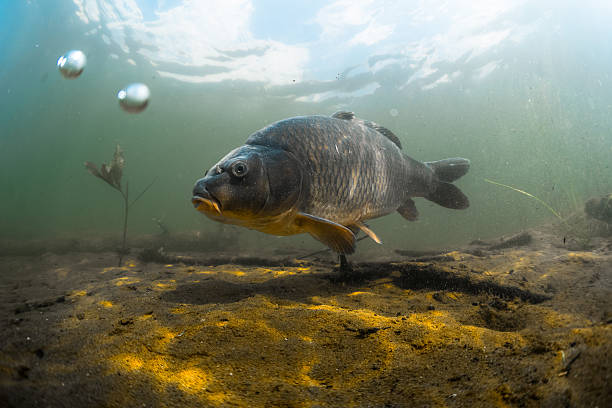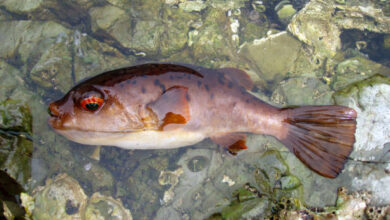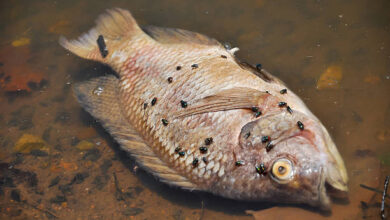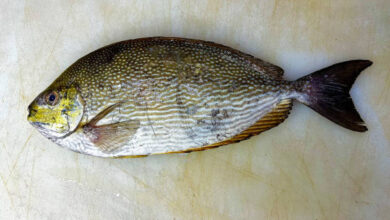A Deep Dive into Fish Ponds How Deep Should Yours Be?

Fish ponds, often seen as the heart of a garden, not only offer a peaceful refuge but also provide an ideal habitat for our aquatic friends. Deciding the depth of your pond can be a bit challenging, but it’s essential to understand the factors that influence this decision. From the species of fish you plan to keep, to your local climate, to maintaining water quality, there are numerous elements to consider. Let’s take a deep dive into how deep your fish pond should be.
Understanding Fish Needs and Their Relationship to Pond Depth
When it comes to fish ponds, one size definitely does not fit all. The type of aquatic creatures you’re planning to host in your garden oasis plays a crucial role in determining its depth. Ever-popular Koi, known for their vibrant colors and majestic sizes, thrive in deeper waters. A minimum of three feet will provide them with ample room to swim and play.
On the flip side, their smaller, equally colorful cousins – the goldfish, can manage just fine with a depth of about two feet. But don’t let these numbers fool you. Going shallow can expose your fishy friends to harsh weather elements and make them easy targets for predators. In essence, picking the right pond depth is like setting the stage for a happy, healthy aquatic life. It’s not just about the dimensions, but also about creating a protective environment where your fish can thrive.
Role of Climate in Determining Pond Depth
Did you know that the climate of your locale has a significant influence on how deep your fish pond should be? In regions known for their scorching summers, a deeper pond can offer a refreshing sanctuary for fish trying to escape the heat. On the other hand, if you’re residing in a place where the winters are harsh and icy, a deeper pond is crucial.
It ensures there’s sufficient water beneath the frozen surface, providing a life-saving habitat for your fish to hunker down until the thaw. Therefore, if your area is prone to severe winters, a minimum depth of four feet is typically recommended. So, before you pick up that shovel and start digging, take a moment to consider the weather patterns in your area. It could make a world of difference for your finned friends!
The Impact of Pond Depth on Water Quality
If you’ve ever wondered how pond depth can have a direct impact on water quality, you’re in for a surprise. The depth of your pond plays a vital role in maintaining the cleanliness and health of the water that your fish call home.
Deeper ponds tend to hold more water. And in this scenario, more is definitely better. Why? Because more water dilutes toxins more effectively, ensuring a healthier environment for your fish. It’s similar to the concept of ‘the solution to pollution is dilution.’ The larger the volume of water, the less concentrated the pollutants are.
But the benefits of a deep pond don’t stop there. Did you know that deeper waters tend to have more stable temperatures? That’s right! Deeper waters resist rapid temperature fluctuations, which can be stressful to your aquatic friends. This stability helps fish adjust better to weather changes, offering them a more consistent environment.
Deeper waters also encourage the proliferation of beneficial bacteria. These tiny, invisible helpers play a crucial role in your pond’s ecosystem. They break down fish waste and other organic matter into less harmful substances. These activities contribute to cleaner water and a healthier habitat for your fish.
In essence, the depth of your pond has a profound impact on water quality. It can influence everything from toxin dilution to temperature stability to bacterial activity. When planning your pond, remember, it’s not just about creating a beautiful water feature, but also about ensuring a thriving environment for your fish to live and grow. So go ahead, plan wisely, and create a fish pond that not only looks good but also functions well. Your fish will thank you for it!
Deep Ponds and Predator Protection
Imagine a peaceful day in your garden, suddenly interrupted by the sight of a crafty raccoon or a patient heron eyeing your beloved fish in the pond. You’d wish your pond were deeper. This is exactly why depth plays a critical role in safeguarding your aquatic friends from predators. The shallower your pond, the more accessible your fish are to these uninvited guests.
By incorporating deeper zones in your pond, you essentially create a safety net, or rather a safety deep, for your fish. These depths provide them a refuge, a place to flee and hide when danger lurks above the water surface.

But don’t just stop at making your pond deep. Enhance this protective feature by introducing overhanging ledges and caves into your pond design. These features not only add a touch of natural beauty to your pond, but also serve as additional hideaways for your fish.
Also consider planting dense vegetation around the edges of your pond. These plants not only improve the aesthetic appeal of your pond but also act as a line of defense, discouraging predators from getting too close to the water.
Creating a deep pond is not just about providing a spacious swimming area for your fish; it’s also about designing a fortress to keep them safe from predators. So go ahead and give your fish that much-needed depth. It’s an investment in their safety and well-being.
The Challenges of a Deep Fish Pond
While deeper ponds come with a myriad of benefits for your finned friends, they are not without their share of hurdles. The most notable one is the increased workload and resources required to establish and maintain such ponds. The process of excavation can be laborious, and the cost of filling and managing a larger volume of water is certainly higher.
Another challenge that arises with a deeper pond is the hindered visibility of your aquatic buddies. One of the joys of having a fish pond is the ability to watch the fish darting around, exhibiting their vibrant colors. However, with greater depth, your fish may be less visible, especially on cloudy days or when the water is a bit murky.
Lastly, there’s the safety aspect to think about. If you have little ones or pets frolicking around in your garden, a deeper pond could be a potential safety hazard. It’s vital to install safeguards such as fences or net covers to prevent any unfortunate accidents.
Creating a deep pond is indeed a commitment. It requires a balance of resources, aesthetics, and safety. But with careful planning and consideration, these challenges can be effectively managed. After all, the ultimate goal is to create a haven where your fish can thrive and you can enjoy the serenity of your aquatic garden.
Achieving Balance: Optimal Pond Depth
Striking the right balance in your pond’s depth can feel like a tightrope walk. But don’t let this scare you off; instead, see it as an opportunity to cater specifically to the needs of your garden and your aquatic friends. While there’s no universal ‘right’ depth, as each pond reflects its unique environment and inhabitants, there are some guiding principles you can follow.
Generally, for a mixed community of Koi and goldfish, which are among the most common fish kept in garden ponds, a minimum depth of three feet is recommended. This offers plenty of room for the fish to swim freely, hide from predators, and shelter from harsh weather. For an added layer of protection, and if your location and resources permit, you could consider having areas that plunge to a depth of five feet. Remember, this isn’t a hard and fast rule but rather a starting point. Observe your fish, adapt to your surroundings, and don’t be afraid to make adjustments. After all, the beauty of owning a fish pond lies in its capacity for change and growth, much like the captivating creatures that call it home.
Conclusion: Customize Your Pond to Your Needs and Environment
As we round off our exploration of fish pond depths, it’s important to underline that the depth of your fish pond should not be a one-size-fits-all decision. Instead, it should reflect a harmonious blend of your specific needs, the environment in which you live, and the type of fish you plan on fostering.
Are you living in an area where the temperatures dip to freezing lows, or does the mercury soar high during the summers? These climatic conditions will undoubtedly shape your decisions on the depth of your pond. Similarly, are you planning to provide a home to a variety of fish species or stick to a particular kind? The requirements of different fish species will directly influence the appropriate depth for your pond.
And let’s not forget the pivotal role you play in maintaining this aquatic ecosystem.
The deeper your pond, the greater the responsibility. Cleaning, monitoring water quality, and ensuring optimal oxygenation are all tasks that could become more demanding with a deeper pond. Therefore, think about the time and effort you’re willing and able to invest in pond maintenance.
Just as every fish is unique, so too should be your pond. The sweet spot of fish pond depth lies in creating an environment where your aquatic friends can thrive while also aligning with your personal lifestyle and capacity to maintain it. Don’t be swayed by generic guidelines or what your neighbor’s pond looks like. Your fish pond is a reflection of you—let it tell its own unique story!
Creating a fish pond is not just about digging a hole in your backyard; it’s about creating a new lease of life for your aquatic friends. And as you embark on this exciting journey, always remember— depth is not just a measurement, it’s an essential factor in shaping a thriving, balanced, and healthy fish habitat. Happy pond digging!



